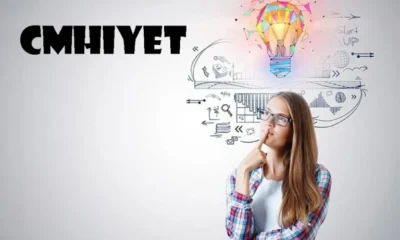BLOG
A Journey Through Time: Key Events from 2023-1954
Published
11 months agoon

The 20th and early 21st centuries have been marked by transformative events that have reshaped societies, economies, and the global landscape. From groundbreaking technological advancements to pivotal political shifts, the period between 1954 and 2023 is a testament to human progress and change. This article provides a comprehensive overview of key events during this era, exploring their impact and significance. Additionally, we address frequently asked questions to provide a deeper understanding of these historical milestones.
1954-1960: The Dawn of the Cold War and Social Change
1954: Brown v. Board of Education
In 1954, the U.S. Supreme Court’s landmark decision in Brown v. Board of Education declared that racial segregation in public schools was unconstitutional. This ruling overturned the earlier Plessy v. Ferguson decision, which had established the “separate but equal” doctrine. The Brown decision was a significant victory for the Civil Rights Movement and set the stage for further desegregation efforts.
1957: Launch of Sputnik 1
The Soviet Union’s launch of Sputnik 1 in 1957 marked the beginning of the space age. As the first artificial satellite to orbit the Earth, Sputnik 1 demonstrated the Soviet Union’s technological capabilities and triggered the space race between the United States and the USSR. This event led to significant advancements in space exploration and technology.
1960: The Election of John F. Kennedy
John F. Kennedy’s election as the 35th President of the United States in 1960 represented a new era of leadership and optimism. Kennedy’s campaign slogan, “A New Frontier,” resonated with many Americans and highlighted his focus on civil rights, space exploration, and international diplomacy.
1961-1970: The Civil Rights Movement and Cultural Revolutions
1963: March on Washington and “I Have a Dream”
In August 1963, Martin Luther King Jr. delivered his iconic “I Have a Dream” speech during the March on Washington for Jobs and Freedom. The march, attended by over 250,000 people, was a pivotal event in the Civil Rights Movement, advocating for racial equality and economic justice. King’s speech remains a defining moment in American history.
1964: Civil Rights Act
The passage of the Civil Rights Act of 1964 was a landmark achievement in the struggle for racial equality in the United States. The Act prohibited discrimination based on race, color, religion, sex, or national origin and was a major legislative victory for the Civil Rights Movement.
1969: Moon Landing
On July 20, 1969, NASA’s Apollo 11 mission successfully landed astronauts Neil Armstrong and Buzz Aldrin on the Moon. Armstrong’s famous words, “That’s one small step for man, one giant leap for mankind,” marked a historic achievement in space exploration and symbolized human ingenuity and perseverance.
1971-1980: Political Shifts and Technological Breakthroughs
1972: Watergate Scandal
The Watergate scandal, which began with a break-in at the Democratic National Committee headquarters, led to a major political crisis in the United States. The investigation revealed widespread corruption and abuse of power within the Nixon administration, culminating in President Richard Nixon’s resignation in 1974. The scandal had profound effects on American politics and public trust in government.
1973: End of the Vietnam War
The Paris Peace Accords signed in January 1973 marked the official end of U.S. involvement in the Vietnam War. The conflict, which had lasted nearly two decades, had significant impacts on both Vietnam and the United States, leading to widespread political and social changes.
1979: Iranian Revolution
The Iranian Revolution of 1979 resulted in the overthrow of the Shah of Iran and the establishment of the Islamic Republic under Ayatollah Khomeini. This event had far-reaching implications for the Middle East, leading to a shift in regional power dynamics and impacting U.S.-Iran relations for decades.
1981-1990: The Fall of the Berlin Wall and Technological Advancements
1981: The Assassination Attempt on Ronald Reagan
On March 30, 1981, President Ronald Reagan survived an assassination attempt by John Hinckley Jr. The attempt, which also injured Press Secretary James Brady, highlighted issues of gun control and mental health in the United States. Reagan’s recovery and continued presidency were seen as a testament to his resilience.
1989: Fall of the Berlin Wall
The fall of the Berlin Wall on November 9, 1989, was a symbolic end to the Cold War and the division of East and West Germany. The event led to the reunification of Germany and marked a significant shift in European and global geopolitics, paving the way for the expansion of the European Union and NATO.
1990: Nelson Mandela’s Release
Nelson Mandela was released from prison on February 11, 1990, after 27 years of incarceration. His release marked a turning point in South Africa’s struggle against apartheid and set the stage for democratic reforms and the eventual end of racial segregation in the country.
1991-2000: The Rise of the Internet and Global Conflicts
1991: Dissolution of the Soviet Union
The dissolution of the Soviet Union in December 1991 marked the end of the Cold War and the emergence of 15 independent republics. The collapse of the USSR led to significant geopolitical changes and the reorientation of global power dynamics, with the United States emerging as the sole superpower.
1994: The Rwandan Genocide
The Rwandan Genocide of 1994 was a devastating conflict that resulted in the mass murder of approximately 800,000 Tutsis and moderate Hutus. The genocide highlighted issues of ethnic violence and international intervention and remains a somber chapter in recent history.
1999: The Launch of the Euro
On January 1, 1999, the Euro was introduced as the single currency for 11 European countries, marking a significant step in European integration. The Euro has since become a major global currency, facilitating economic cooperation and trade within the Eurozone.
2001-2010: The War on Terror and Technological Innovation
2001: September 11 Attacks
The September 11, 2001, terrorist attacks on the World Trade Center and the Pentagon, carried out by the extremist group al-Qaeda, had a profound impact on global security and geopolitics. The attacks led to the initiation of the War on Terror, including the invasion of Afghanistan and Iraq, and reshaped international relations and domestic security policies.
2004: Indian Ocean Tsunami
On December 26, 2004, a massive earthquake off the coast of Sumatra triggered a devastating tsunami that affected countries around the Indian Ocean. The disaster resulted in over 230,000 deaths and widespread destruction, prompting an international humanitarian response and efforts to improve early warning systems.
2007: The Launch of the iPhone
Apple Inc.’s launch of the iPhone in 2007 revolutionized the smartphone industry and transformed communication, entertainment, and business practices. The iPhone’s introduction marked the beginning of the modern mobile era, leading to widespread adoption of smartphones and the development of new digital technologies.
2011-2023: The Age of Digital Transformation and Global Challenges
2011: Arab Spring
The Arab Spring, a series of anti-government protests and uprisings that began in Tunisia in late 2010 and spread across the Middle East and North Africa in 2011, resulted in significant political changes in several countries. The movement led to the ousting of several long-standing leaders and highlighted the power of social media in mobilizing political activism.
2016: Brexit Referendum
In June 2016, the United Kingdom voted to leave the European Union in a referendum commonly referred to as Brexit. The decision to exit the EU led to complex negotiations and significant political and economic implications for the UK and the European Union.
2020: COVID-19 Pandemic
The COVID-19 pandemic, which began in late 2019 and spread globally in 2020, had a profound impact on public health, economies, and daily life. The pandemic led to widespread lockdowns, changes in work and education, and a global effort to develop and distribute vaccines.
2021: U.S. Capitol Riot
On January 6, 2021, a violent attack on the U.S. Capitol by supporters of then-President Donald Trump sought to overturn the results of the 2020 presidential election. The riot highlighted deep political divisions within the United States and raised concerns about the state of democracy and political stability.
FAQs
1. What were the main causes of the Cold War?
The Cold War was primarily driven by ideological differences between the United States and the Soviet Union. The conflict was rooted in competing political and economic systems—capitalism versus communism—as well as mutual distrust, military competition, and conflicting interests in global influence.
2. How did the Internet change global communication?
The Internet revolutionized global communication by enabling instant access to information, facilitating real-time interactions, and connecting people across vast distances. It transformed industries, social practices, and the way people access news and entertainment, making information more accessible and fostering global connectivity.
3. What were the key outcomes of the Rwandan Genocide?
The Rwandan Genocide had devastating human and social consequences, including the loss of approximately 800,000 lives and severe trauma for survivors. It also led to international efforts to address issues of genocide prevention, human rights, and the need for effective interventions in conflict situations.
4. What were the implications of the Brexit referendum?
The Brexit referendum led to the UK’s decision to leave the European Union, resulting in significant political, economic, and legal changes. It affected trade relations, regulatory frameworks, and the movement of people between the UK and EU member states, prompting negotiations and adjustments in various sectors.
5. How has the COVID-19 pandemic influenced global health policies?
The COVID-19 pandemic highlighted the importance of global health preparedness and response. It led to accelerated vaccine development, increased focus on public health infrastructure, and the need for international cooperation in managing pandemics. The pandemic also emphasized the significance of equitable access to healthcare and the resilience of health systems.
6. What was the significance of the moon landing in 1969?
The moon landing in 1969 was a historic achievement in space exploration, demonstrating human ingenuity and technological advancement. It marked the first time humans set foot on another celestial body, advancing scientific knowledge and inspiring future space exploration efforts.
7. How did the Watergate scandal impact American politics?
The Watergate scandal led to widespread public distrust in government and had lasting effects on American politics. It resulted in President Nixon’s resignation and prompted reforms in campaign finance, executive accountability, and transparency, shaping modern political practices.
8. What were the key drivers behind the rise of digital technology in the 21st century?
The rise of digital technology in the 21st century was driven by advancements in computing power, the proliferation of the Internet, and innovations in mobile and communication technologies. The development of smartphones, social media platforms, and cloud computing transformed how people interact, work, and access information.
Conclusion
The period from 2023-1954 has been marked by significant events that have shaped the modern world. From the civil rights advancements of the 1960s to the digital transformation of the 21st century, each event has contributed to the evolving narrative of human progress and global interaction. By examining these key moments, we gain a deeper understanding of the forces that have shaped our contemporary world and continue to influence our future.
You may like

Introduction to the Bumped Things NYT Crossword Puzzle
Have you ever found yourself staring at a New York Times crossword puzzle, trying to decode the phrase “bumped things nyt crossword”? If so, you’re not alone. The joy of cracking these clues is what makes crosswords an enduring favorite among puzzle enthusiasts. Whether you’re a seasoned solver or just starting out, understanding specific themes like “bumped things” can elevate your game. This blog post dives deep into this intriguing clue and shares insights that will sharpen your solving skills while unraveling the fun behind one of the most beloved aspects of wordplay! Let’s get started on this puzzling journey together.
Explanation of Clues and Answers
When tackling the bumped things NYT crossword, understanding the clues is key. Each clue can range from straightforward definitions to clever wordplay. Some may reference cultural phenomena or common phrases that require lateral thinking.
For example, a clue might read “Items dropped in a game” leading to an answer like “pucks.” This requires connecting sports terminology with everyday language.
Sometimes clues use puns or double meanings. Recognizing these nuances elevates your solving experience and enhances enjoyment.
Pay attention to specific wording as well. Words like “often” or “sometimes” hint at variability in answers, expanding possibilities beyond just one correct response.
Decoding each clue effectively transforms your approach and deepens your appreciation for these intricate puzzles. The dance between hints and potential solutions keeps every session fresh and stimulating.
Tips for Solving the Puzzle
When tackling the bumped things NYT crossword, start with the easy clues. Look for familiar phrases or straightforward answers that can help you build momentum.
Pay attention to letter patterns. If you’ve filled in a few letters, try to visualize possible words that fit. This can spark ideas for other intersecting clues.
Don’t hesitate to use pencil and eraser! It’s all about trial and error. If a word doesn’t seem right, be willing to adjust your initial thoughts.
Consider common prefixes and suffixes too. They often pop up in crossword puzzles, providing hints toward longer entries.
Take breaks when you’re stuck. Stepping away might give your brain the reset it needs to see solutions more clearly later on.
Common Themes in Bumped Things Puzzles
Bumped things in crossword puzzles often revolve around everyday experiences. Think about objects that tend to collide or interact unexpectedly.
You might encounter clues related to items like “cars” and “shopping carts,” both of which often find themselves in a little clash at the grocery store parking lot.
Another common theme includes social scenarios, such as awkward moments when people accidentally bump into each other at events. These themes resonate with many, making the puzzle relatable and enjoyable.
Cultural references also play a significant role. From pop culture icons who’ve had their share of mishaps to famous movie scenes featuring clumsy encounters—these elements add depth and humor.
Wordplay is key in these puzzles. Expect puns or clever twists on language that elevate the experience from just solving clues to appreciating the art behind them.
Strategies for Solving Bumped Things Puzzles
When tackling bumped things puzzles, start by focusing on the clues that seem most familiar. These often provide a solid foundation for building out the rest of your grid.
Next, look for intersecting letters. When you fill in one answer, it can lead to others based on shared letters. This cross-pollination is vital for progress.
Consider breaking down complex clues into smaller parts. Sometimes, a phrase may have a double meaning or involve wordplay that requires some lateral thinking.
Don’t hesitate to jot down potential answers even if you’re unsure about them. They might spark connections with other clues later on.
Take breaks when feeling stuck. Stepping away can refresh your mind and offer new perspectives upon return to the puzzle board.
The Appeal of Crossword Puzzles
Crossword puzzles have a unique charm that captivates many. They challenge the mind while providing a sense of achievement upon completion.
Each puzzle is like a little adventure, inviting solvers to explore vocabulary, trivia, and wordplay. The thrill lies in those “aha!” moments when everything clicks into place.
They also offer an escape from daily stress. Sitting down with a pen and paper can be meditative, allowing players to focus solely on the task at hand.
Socially, they bring people together too. Friends often gather to tackle them as a team or compete against each other for fun bragging rights.
With themes ranging from pop culture to history, there’s something for everyone. It’s this diversity that keeps enthusiasts returning day after day for their favorite crossword fix.
Conclusion
Crossword puzzles captivate many, and the Bumped Things NYT Crossword is no exception. These puzzles challenge your brain while offering a sense of accomplishment when solved. By understanding clues and honing strategies, you can tackle even the trickiest entries with confidence.
With each puzzle you solve, you’re not just filling in squares; you’re engaging in a delightful exercise for your mind. Whether you’re an experienced puzzler or new to the game, embracing this fun activity brings satisfaction beyond words.
So grab your pencil (or app) and dive into the world of bumped things – there’s always something exciting waiting to be discovered!
FAQs
What is “bumped things nyt crossword”?
“Bumped things” is a recurring clue in The New York Times crossword, often referencing items or actions that involve accidental contact, movement, or disruption—requiring solvers to think creatively about the context.
How often does “bumped things” appear in the NYT Crossword?
It’s not a daily clue, but it surfaces from time to time, especially in quick or themed puzzles where wordplay is emphasized.
What type of answer is expected for “bumped things”?
Answers typically relate to physical objects or situations involving collisions or interruptions—like “carts,” “elbows,” or “pucks.”
Is there a trick to solving vague crossword clues like this?
Yes—start with the shortest, easiest clues to build out the grid, then use context and crossing letters to decode abstract ones like “bumped things.”
Why are clues like “bumped things” so popular in crossword puzzles?
They add playful ambiguity, challenging solvers to interpret common phrases or actions in new and clever ways, which enhances the overall puzzle experience.
BLOG
Why Your Astrological Sign May Not Match Your Personality
Published
2 months agoon
May 10, 2025
What’s your Astrological Sign? It’s one of the first questions some of us are asked when approached by someone in a bar, at a party or even when having lunch with some of our friends. Astrology, for centuries, has been one of the largest phenomenons out there. There’s a reason why many magazines and newspapers have a horoscope page, and there’s also a reason why almost every bookstore or library has a section dedicated completely to astrology. Many of us could just be curious about why some of us act differently than others and whom we will get along with best, and others may just want to see if their sign does, in fact, match their personality.
When talking to most of my friends about this topic, most of them would agree that they act like their sign. However, there are some who are more skeptical than others. Sometimes, I’ll hear people say things like, “I’m not emotional,” or “I’m not introverted,” and “Why is it saying I am?” This is because we are not just made up of one single sign, but actually multiple signs (13 to be exact). Depending on where and when you were born, each of us have a different astrological chart, and each part of the chart represents a different aspect of life. The sign that part of the chart is under represents how we approach that aspect. To understand an astrological chart, though, it’s best to understand what each sign means and stands for first.

Introduction
The code “3506006471” might appear to be just a random sequence of numbers, but it could hold significant importance depending on its context. Often, such codes are identifiers used for tracking, referencing, or defining specific products, technical specifications, or services. In today’s article, we’ll dive deep into understanding “3506006471,” its potential uses, and why understanding it can benefit users, businesses, and industries alike.
What is 3506006471?
The code “3506006471” could be a unique identifier in various industries. Let’s explore some potential meanings and the contexts in which such a code might be relevant.
- As a Product Code: Many companies, especially in manufacturing, assign numeric codes to products for easy identification. “3506006471” might represent a specific model, version, or variant within a product line. This code would allow retailers, suppliers, and customers to recognize and request the exact item without confusion.
- As a Technical Reference: In technical fields, codes like “3506006471” could refer to components, software versions, or engineering specifications. Such references help technicians or engineers ensure they are working with the correct parts or configurations.
- As a Service Identifier: This code might also serve as a service ID or subscription reference in sectors like telecommunications or internet services, where every customer or device needs a unique identifier for tracking and troubleshooting.
Understanding what “3506006471” represents in your specific context is crucial, as it could impact purchasing decisions, technical setups, and service configurations.
Features and Specifications of 3506006471
If “3506006471” refers to a product or component, it likely has specific features or specifications that define its functionality and applications.
- Core Attributes:
- Size and Dimensions: Depending on the item, physical attributes might include height, width, depth, and weight, which are essential for assessing compatibility with other items or spaces.
- Material Composition: If it’s a physical product, knowing the materials used, such as metals, plastics, or composites, can give insights into durability, performance, and environmental impact.
- Technical Specifications:
- Electrical Specifications: For electronic items, the voltage, wattage, and power requirements would be crucial. Proper power compatibility ensures safety and efficient operation.
- Software/Firmware Details: If “3506006471” pertains to software, version details, operating requirements, and update frequency are valuable for ensuring compatibility with other systems.
- Special Features:
- Advanced Functionalities: For high-tech items, additional functionalities like wireless connectivity, touchscreen compatibility, or automated features can be beneficial.
- Sustainability Indicators: Increasingly, customers and businesses look for items with eco-friendly materials, energy-saving features, or certifications like Energy Star ratings, which would enhance the product’s appeal and compliance.
If “3506006471” has detailed specifications associated with it, understanding these can assist in making informed choices, especially when comparing it with similar codes or items.
Applications and Use Cases for 3506006471
- Industrial Applications:
- In manufacturing, an identifier like “3506006471” could be used to track specific machine parts or tools essential for production. This allows inventory managers to maintain stock levels effectively and helps technicians find exact replacements.
- Commercial Applications:
- For businesses, especially in retail or ecommerce, unique identifiers like “3506006471” help streamline supply chains. Suppliers, warehouses, and retailers can identify, stock, and ship products more efficiently by referencing this code in databases.
- Consumer Applications:
- For consumers, “3506006471” might be found on product manuals, warranty documents, or technical support sites. Knowing this code allows consumers to find the correct parts, accessories, or customer service options related to their product.
- Technical Service Use Cases:
- In telecommunications, codes like “3506006471” may identify network devices, subscriber plans, or specific technical configurations. This is crucial for technicians who need accurate information to set up or troubleshoot equipment.
Benefits of Using or Understanding 3506006471
- Streamlined Inventory Management:
- For businesses dealing in physical products, a code like “3506006471” simplifies inventory management. Knowing exactly what each code represents reduces the risk of stockouts, misplaced items, or delays.
- Enhanced Accuracy in Service Configurations:
- In technical services, using precise identifiers such as “3506006471” ensures that the right configurations, versions, or updates are applied, minimizing errors and improving system stability.
- Improved Customer Experience:
- When customers can easily identify products or services using unique codes, their overall experience improves. They can quickly find support resources, replacement parts, or compatible accessories by searching for “3506006471.”
- Efficient Troubleshooting:
- Technicians and support teams can pinpoint issues faster when codes like “3506006471” are used in diagnostics. This leads to quicker resolutions, minimal downtime, and higher customer satisfaction.
Whether you’re a business looking to optimize operations or a consumer seeking convenience, recognizing the benefits of unique identifiers like “3506006471” can be immensely helpful.
How to Access or Purchase 3506006471 (if applicable)
- Identify Authorized Vendors:
- Start by searching for authorized retailers or distributors if “3506006471” is tied to a specific brand. Official vendors ensure you receive genuine products and often provide warranties and support.
- Check Online Marketplaces:
- Websites like Amazon, eBay, or industry-specific platforms might carry items identified by “3506006471.” Be sure to verify seller credibility and product reviews.
- Direct Purchase from Manufacturers:
- For certain industrial or technical items, purchasing directly from the manufacturer may be possible. This can be a more reliable option for large or custom orders.
- Cost Considerations:
- Prices for items or services related to “3506006471” can vary depending on market demand, the complexity of the item, and any associated customization. Consider costs like shipping, taxes, and potential import fees if purchasing internationally.
- After-Sales Support and Maintenance:
- Many vendors offer warranties and support options. Familiarize yourself with these services to ensure long-term value, especially if “3506006471” is a high-investment item or requires regular maintenance.
Conclusion
In conclusion, understanding and using unique codes like “3506006471” can be highly beneficial for both consumers and businesses. Whether this identifier refers to a product, technical component, or service, knowing its specifications, applications, and how to access it can streamline processes and improve efficiency. For consumers, it provides a straightforward way to access relevant resources, support, and compatible items, while businesses can leverage it for inventory management and troubleshooting.
As we’ve explored, codes such as “3506006471” serve as a valuable tool across multiple industries, enhancing accuracy, reducing errors, and supporting better customer experiences. If you come across this code in your work or daily life, you’ll now be better equipped to make the most of its potential!
Trending
-

 ENTERTAINMENT8 months ago
ENTERTAINMENT8 months agoExploring A Sign of Affection Chapter 3: A Deeper Connection
-

 BLOG11 months ago
BLOG11 months agoDiscovering the Digital World with about somethingnewnow net blog
-

 NEWS11 months ago
NEWS11 months agoPLLsfored: A New Era in Personalized Learning Systems
-

 BLOG11 months ago
BLOG11 months agoApplelonia Bacher Carlyle IL: A Journey Through the Heart of Illinois
-

 NEWS11 months ago
NEWS11 months agoCmhiyet: Understanding Its Definition and Significance
-

 GAMES11 months ago
GAMES11 months agoThe Rising Soccer Star: Cori Castellano Irvington
-

 Education11 months ago
Education11 months agoHellseed Crossword in Spanish: A Comprehensive Guide
-

 TECH11 months ago
TECH11 months agoTrangran: A Versatile Platform for Mapping and Marketplaces
